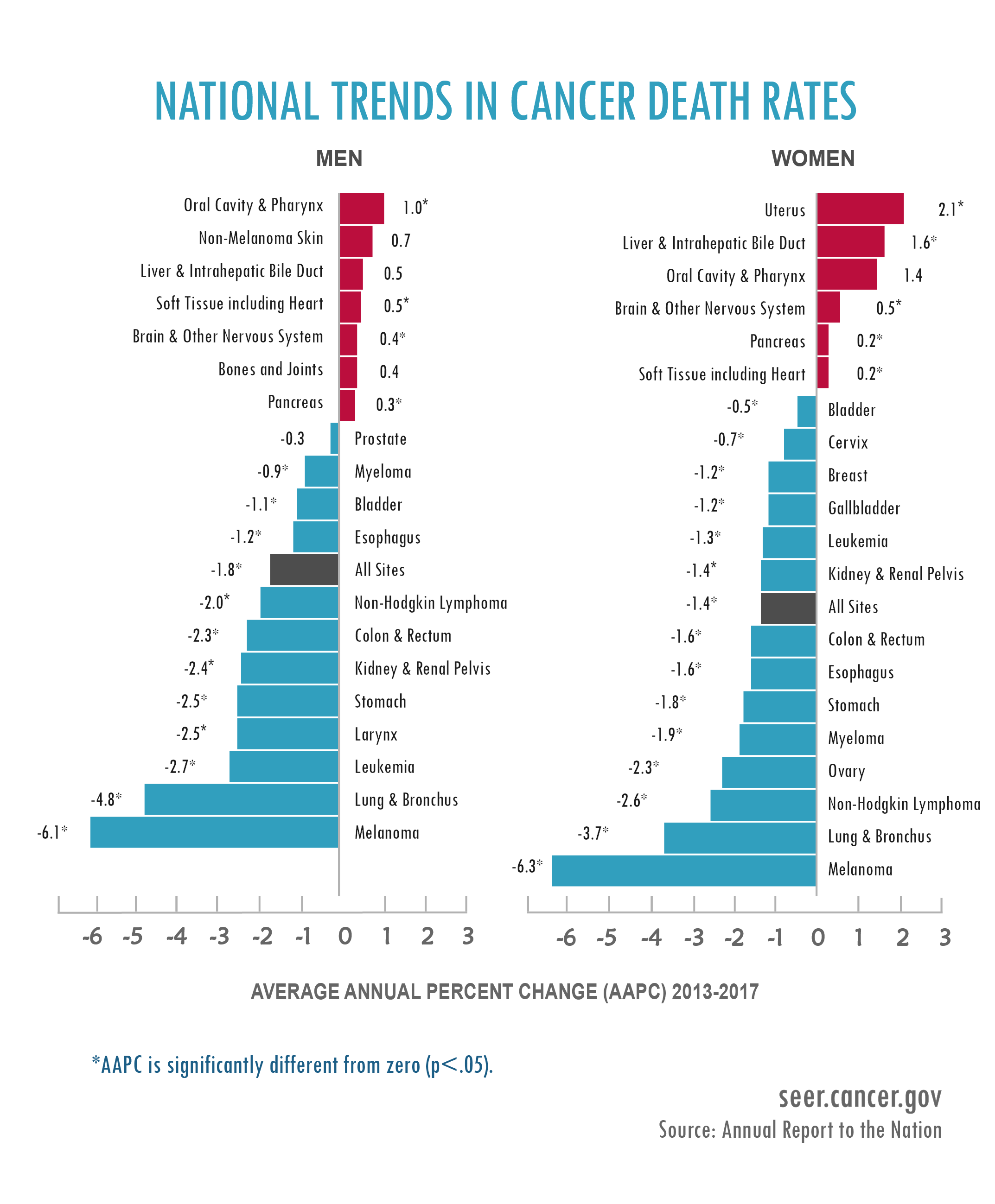U.S. Still Has Declining Cancer Death Rates, Latest National Report Says
Overall cancer death rates fell 1.5% on average per year from 2001–2017 in the United States for all cancer sites combined, according to the Annual Report to the Nation on the Status of Cancer (https://seer.cancer.gov/report_to_nation) from the Centers for Disease Control and Prevention (CDC), National Cancer Institute (NCI), American Cancer Society, and North American Association of Central Cancer Registries.
The decreases were seen across all major racial and ethnic groups, age groups, and genders, the organizations reported. Cancer death rates for men are slowing slightly more than for women, at 1.8% and 1.4% per year, respectively. Additionally, incidence rates for all cancers combined leveled off among men and increased slightly for women during 2012 to 2016.
“Thanks to advancements brought about by basic research, we are making remarkable progress against cancer,” NCI Director Ned Sharpless, MD, said. “This report provides further evidence that cancer death rates continue to decline. But we must not be complacent. The cancer incidence data—especially the increase in cancer among women—is a clear reminder that there is more work ahead.”
Two of the cancers with the highest reductions in death rates from 2013 to 2017 were melanoma, which decreased 6.1% per year among men and 6.3% per year among women, and lung cancer, which fell 4.8% per year among men and 3.7% per year among women. However, lung cancer continues to be the leading cause of cancer death, accounting for about one-fourth of all cancer deaths.
The agencies also reported that the United States met the Healthy People 2020 (https://www.healthypeople.gov/2020/Leading-Health-Indicators) targets for reducing death rates for all cancers combined as well as for lung, prostate, female breast, and colorectal cancers overall—although not in all sociodemographic groups. More work is needed to address disparities in cancer screening and behaviors linked to cancer risk. The Healthy People 2020 targets were not met for adults to decrease cigarette smoking, increase smoking cessation success, reduce excessive alcohol use, and reduce obesity prevalence.
“The United States continues to make significant progress in cancer prevention, early detection, and treatment,” CDC Director Robert R. Redfield, MD, said. “While we are encouraged that overall cancer death rates have decreased, there is still much more we can do to prevent new cancers and support communities, families, and cancer survivors in this ongoing battle.”

